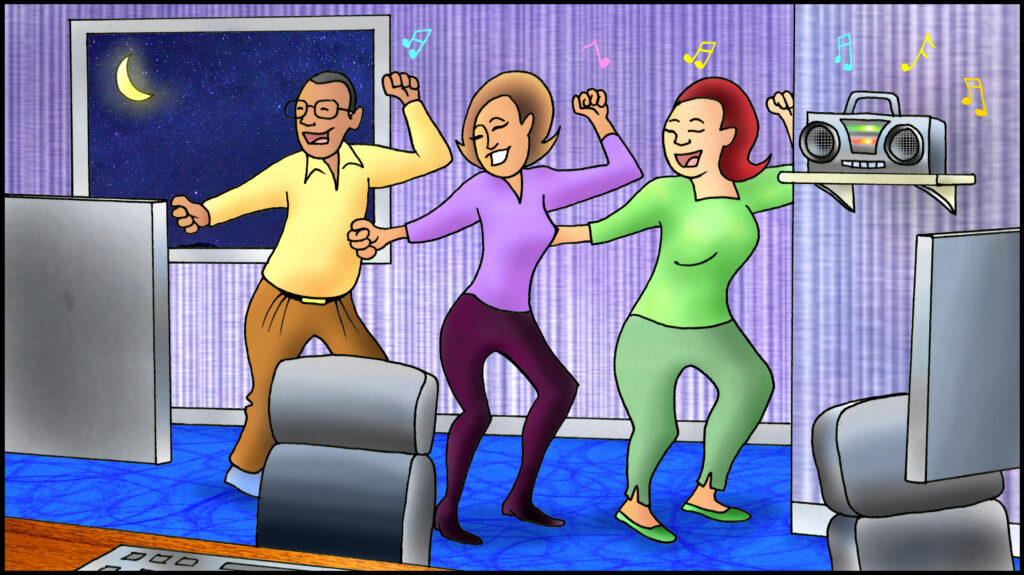Imagine our surprise at seeing Controllers turn on the radio, push away from their consoles, and begin dancing in the middle of the Control Room floor. It was a joyful few minutes and it made us smile. When Pipeline Performance Group conducts an onsite Workload Assessment, we observe and interview Controllers on both day shift and night shift. This particular group working night shift had found a delightfully entertaining way to mitigate their fatigue, very effectively.
As with most exercise, when the body feels good, the mind does also. They had found a way to stir up energy and create a release of endorphins, the feel-good hormones, during times when the body feels most sluggish. That rush of endorphins left them feeling energized and less anxious. They were able to push through and finish their shift more easily. Certainly, dance is not the only means for achieving this temporary exhilaration, but it may be the most enjoyable.
What this group of Controllers was experiencing was a lull in their circadian rhythm. The term circadian comes from the Latin phrase “cira diem” which means “around a day.” The body has an internal clock that operates on a 24-hour cycle. This clock is located in the hypothalamus, which is a small region of the brain near the pituitary gland. The body clock, or circadian rhythm, controls the sleep-wake cycle. Natural cues, like sunlight, stimulate the brain to wake. Melatonin secretion begins in sync with the setting sun, which helps the body prepare for sleep. This internal clock also controls body temperature, plays a key role in digestion, the cardiovascular system, and hormone production.
For shift-workers, the rhythm is disrupted due to schedule demands. The greatest of these disruptions is staying awake and alert throughout the night. Working night shift opposes the natural cues that sunrise and sunset provide for waking and sleeping.
Shift workers must be very intentional about getting the sleep your body needs to function properly and avoid disease. Without the right amount of sleep, bodily systems can break down over time creating an environment that is ripe for disease, even premature death. Plan and prepare for sleep, making it a top priority. If you experience physical roadblocks to sleep, see a sleep specialist for help. Sleep disorders are treatable.
Everyone can expect a lull in energy during mid-afternoon and the hours just before dawn. These lulls are a natural part of the circadian rhythm. No matter what schedule you’re working, fatigue mitigation can be planned in anticipation of these sluggish hours. Here are a few tips:
- Eat a light snack.
- Drink water, coffee, or tea.
- Practice Alertness Exercises.
- Step away from the console and walk.
- Dance.
“Take care of your body. It’s the only place you have to live.” Jim Rohn
MANAGING FATIGUE EDUCATIONAL PROGRAM | Scarlet Knight © 2021 Please Distribute to Others.




